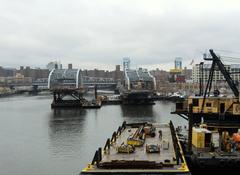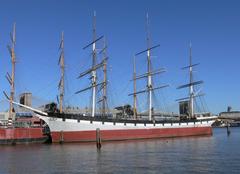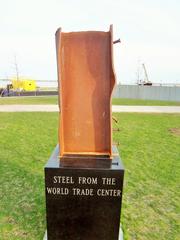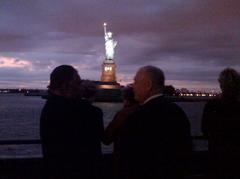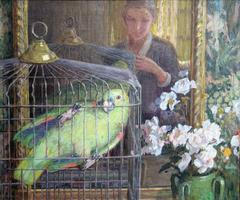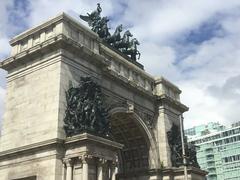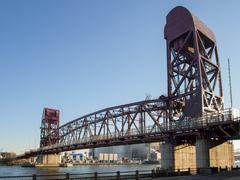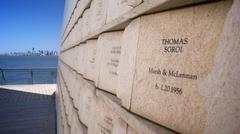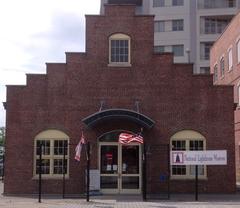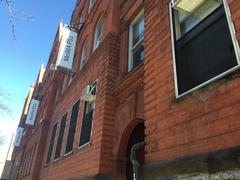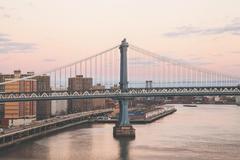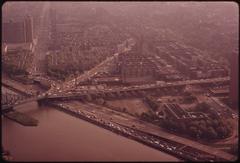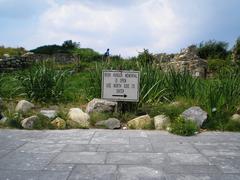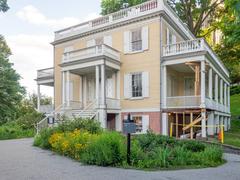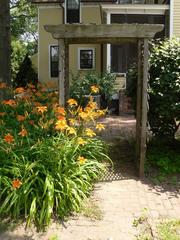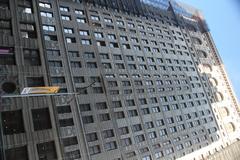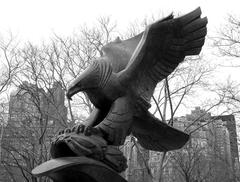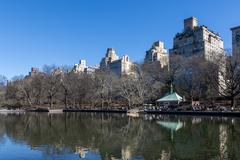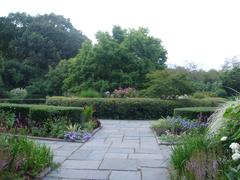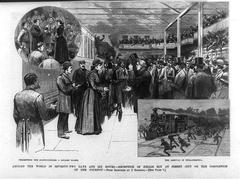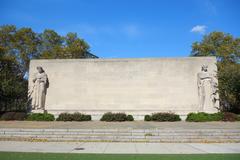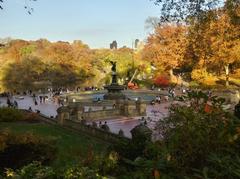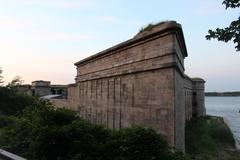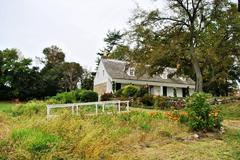Comprehensive Guide to Visiting Shakespeare Garden, New York City, United States
Date: 31/07/2024
Introduction
Nestled within the iconic Central Park in New York City, the Shakespeare Garden is a botanical and literary gem that pays homage to the legendary playwright William Shakespeare. This enchanting garden, initially conceived as the ‘Garden of the Heart’ in 1913 by Dr. Edmond Bronk Southwick, a park entomologist, was renamed in 1916 to commemorate the 300th anniversary of Shakespeare’s death (Central Park NYC). The garden’s design and plant selection were inspired by the flora mentioned in Shakespeare’s works, making it a living homage to his literary genius (Central Park Conservancy).
The Shakespeare Garden is a multifaceted attraction that combines historical, cultural, botanical, educational, community, artistic, environmental, and inspirational significance. This guide will provide visitors with comprehensive information on the garden’s history, design, cultural importance, and practical tips for visiting. Whether you are a literature enthusiast, a nature lover, or simply looking for a peaceful retreat in the bustling city, the Shakespeare Garden offers a unique and memorable experience.
Table of Contents
- Introduction
- History of Shakespeare Garden
- Design and Features
- Restoration and Preservation
- Cultural Significance
- Modern-Day Attraction
- Visitor Information
- Special Events and Tours
- FAQ
- Conclusion
History of Shakespeare Garden
Origins and Early Development
The Shakespeare Garden in Central Park was initially conceived as a space for children to learn about nature. The idea was proposed by Charles B. Stover, a former NYC Parks Commissioner, and brought to fruition by Dr. Edmond Bronk Southwick, an entomologist with an office in the nearby Swedish Cottage. The garden was originally named the “Garden of the Heart” when it was created in 1913 (Central Park NYC).
Dr. Southwick, an avid Shakespeare fan, transformed the rocky terrain southwest of the Great Lawn into a thriving garden. The garden was designed to feature plants and flowers mentioned in William Shakespeare’s works, as well as those found in his private garden in Stratford-upon-Avon (Ephemeral New York).
Renaming and Dedication
On April 23, 1916, the tricentennial of Shakespeare’s death, the garden was formally renamed the Shakespeare Garden as part of the city’s Shakespeare Tercentenary Week celebrations. This renaming was part of a broader Shakespeare garden fad that swept across England and America in the early 20th century, sparked by the 300th anniversary of Shakespeare’s birth (Central Park NYC).
Design and Features
The Shakespeare Garden spans four acres and is designed to evoke the English countryside of the 1600s. It features a dazzling array of trees, plants, and flowers referenced in Shakespeare’s poems and plays. The garden includes tulips, crocuses, daffodils, fritillaries, anemones, hellebores, roses, and several other flower varieties each spring (Central Park NYC).
Bronze plaques with Shakespearean quotes are scattered throughout the garden, adding to its literary charm. Rustic benches and railings, along with meandering paths, enhance the garden’s picturesque quality (Central Park NYC).
Restoration and Preservation
Over the years, the care of the Shakespeare Garden shifted between various groups and NYC Parks. By the mid-1970s, the garden had fallen into neglect due to budget constraints and general disinterest. In 1975, a group of volunteers began efforts to restore the garden. This restoration was completed in 1986, funded by Samuel and May Rudin. The garden was replanted and expanded upward towards Belvedere Castle (Central Park).
Cultural Significance
The Shakespeare Garden has inspired many, including New York Police Captain Edward J. Bourke, who penned a poem in its honor in 1916. His poem, published in the New York Times, described the garden as an “evanescent, dew-flushed scene” where “fairies lent their magic toil” (Atlas Obscura).
The garden’s beauty and tranquility have made it a popular spot for visitors and a model for other Shakespeare gardens across the United States and beyond. It has also become a favored location for romantic moments, such as proposals and quiet reflections (Central Park).
Modern-Day Attraction
Today, the Shakespeare Garden remains one of Central Park’s hidden gems. It is located on the west side of the park between 79th and 80th Streets, a short walk from Belvedere Castle and the Seneca Village landscape. The garden continues to surprise and delight visitors each season with its ever-changing display of plants and flowers (Central Park NYC).
The garden’s rustic benches and secluded spots make it an ideal place for visitors to relax and enjoy the natural beauty. It is also a popular destination for those attending performances at the nearby Delacorte Theater (Central Park).
Visitor Information
Visiting Hours
The Shakespeare Garden is open daily from 6:00 AM to 1:00 AM, in line with Central Park’s hours. There is no entrance fee, making it an accessible attraction for all visitors.
Travel Tips
- Best Time to Visit: The garden is particularly stunning in the spring and early summer when most flowers are in full bloom.
- Nearby Attractions: Belvedere Castle, the Seneca Village site, and the Delacorte Theater are all within a short walking distance.
- Accessibility: The garden has uneven terrain and some narrow paths, so it may be challenging for visitors with mobility issues.
Special Events and Tours
The garden often hosts special events, including guided tours that delve into its history and the various plants featured. It is also a popular location for photo shoots and small wedding ceremonies.
FAQ
- What are the visiting hours for Shakespeare Garden? The garden is open daily from 6:00 AM to 1:00 AM.
- Is there an entrance fee for Shakespeare Garden? No, entrance to the Shakespeare Garden is free.
- What are the best times to visit Shakespeare Garden? The best times to visit are in the spring and early summer when the flowers are in full bloom.
Conclusion
The Shakespeare Garden in Central Park is a testament to the enduring legacy of William Shakespeare and the timeless appeal of nature. Its rich history, beautiful design, and cultural significance make it a must-visit destination for anyone exploring New York City. Whether you’re a literature enthusiast, a nature lover, or simply looking for a peaceful retreat, the Shakespeare Garden offers a unique and memorable experience.
From its origins as a children’s garden to its current status as a beloved community space, the Shakespeare Garden has evolved and thrived thanks to the dedication of volunteers and the Central Park Conservancy. Its ever-changing display of plants and flowers, coupled with the literary charm of Shakespearean quotes and rustic features, continues to captivate visitors year-round (Atlas Obscura). Whether you are attending a guided tour, participating in a special event, or simply enjoying a quiet moment on a rustic bench, the Shakespeare Garden offers a serene escape and a deep connection to both nature and literature.
References
- Central Park NYC. (n.d.). Shakespeare Garden. Retrieved from Central Park NYC
- Central Park Conservancy. (n.d.). Shakespeare Garden. Retrieved from Central Park Conservancy
- Ephemeral New York. (2019). How Central Park Got Its Shakespeare Garden. Retrieved from Ephemeral New York
- Atlas Obscura. (n.d.). Shakespeare Gardens. Retrieved from Atlas Obscura
- NYC Parks. (n.d.). Shakespeare Garden. Retrieved from NYC Parks
- Central Park. (n.d.). The Shakespeare Garden: One of Central Park’s Hidden Gems. Retrieved from Central Park
- NYC Tourism. (n.d.). Shakespeare Garden, Central Park. Retrieved from NYC Tourism
- Loving New York. (n.d.). Shakespeare in the Park NYC. Retrieved from Loving New York
